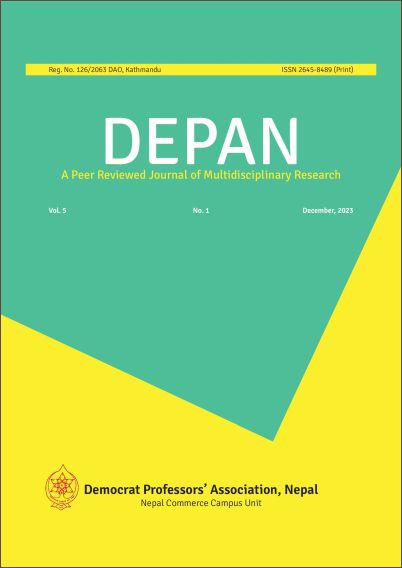Determinants of Mutual Fund Performance in Nepal
DOI:
https://doi.org/10.3126/depan.v5i1.74039Keywords:
NAV, ER, PTR, HPR, Financial PerformanceAbstract
This research investigates the key determinants influencing the performance of mutual funds in the context of the Nepalese financial market. Employing a descriptive and analytical methodology, the study examines the impact of three predictor variables, namely Net Asset Value (NAV), Expense Ratio (ER), and Portfolio Turnover Rate (PTR), on the dependent variable, Holding Period Returns (HPR). Statistical tools such as correlation and regression analyses are applied to scrutinize the relationships among these variables. The model summary analysis reveals that 53.90% of the variations in HPR are accounted for by NAV, ER, and PTR, as indicated by the correlation coefficient (R-Square). This implies that 46.10% of the variations in mutual fund returns remain unexplained by the included predictor variables, suggesting potential influences from external factors. The regression analysis further demonstrates the significance of the model, with a statistically significant F-statistic (F = 1.98, p = .001). The regression coefficients indicate that NAV positively influences HPR (Beta = 1.776, p = 0.044), while ER and PTR exhibit negative and positive effects, respectively, though ER's impact is statistically insignificant. The study contributes to the understanding of the intricate dynamics affecting mutual fund performance in the Nepalese market. The findings suggest that investors and fund managers should pay particular attention to NAV and PTR as potential drivers of fund returns. The research provides valuable insights for policymakers and market participants seeking to enhance the efficiency and transparency of the mutual fund industry in Nepal
Downloads
Downloads
Published
How to Cite
Issue
Section
License
This license enables reusers to distribute, remix, adapt, and build upon the material in any medium or format, so long as attribution is given to the creator. The license allows for commercial use.




